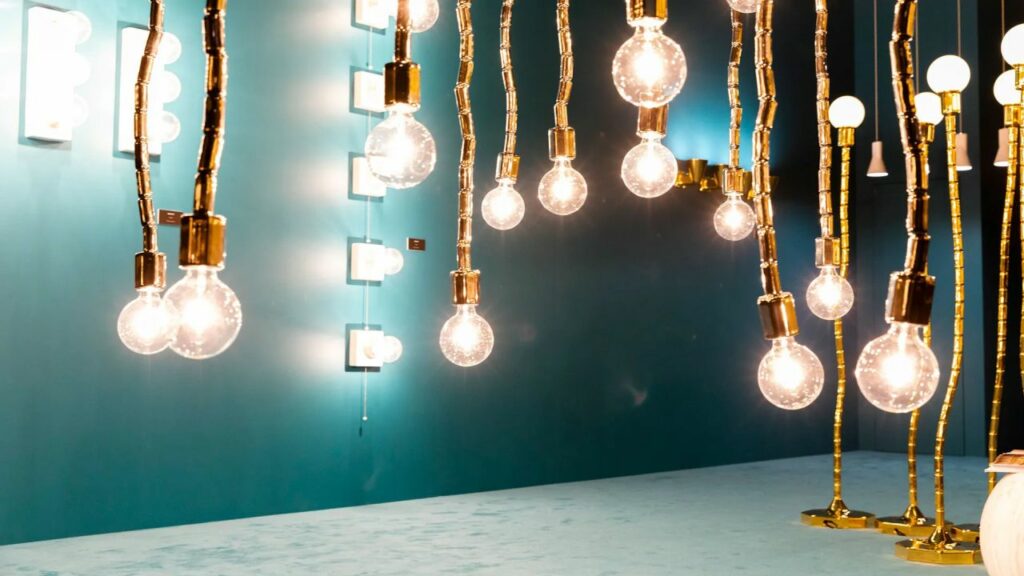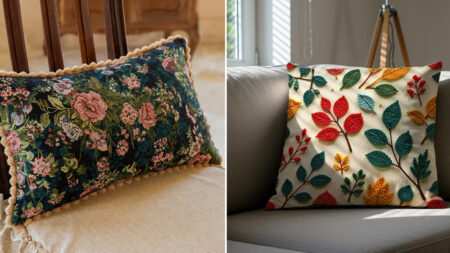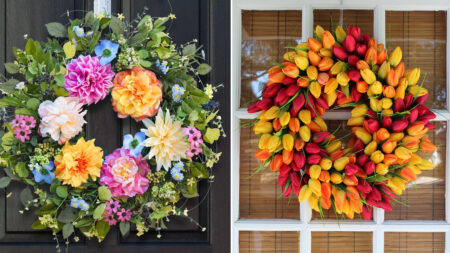The 61st edition of Salone del Mobile is less than a month away and we couldn’t be more excited. Scheduled from April 18 to 23, 2023 at the Fiera Milano Rho in Italy, Salone del Mobile aka the Milan Furniture Fair is gearing up to bring the design to an international stage by conflating culture and innovative furnishings. This year, the event’s underlying theme is ‘light’ with a conspicuous focus on the themes of circular economy, reuse, sustainability of processes and materials, recycling, a more evolved trade-fair experience, and an impactful cultural component.
Evoking the experimental dimension of design, the 2023 edition will shed light on innovative materials and urban regeneration, proposing ambitious visions of the future with tangibility. The stars of the show, as usual, will be six major events: Salone Internazionale del Mobile, the International Furnishing Accessories Exhibition, Workplace3.0, S.Project, Euroluce, and SaloneSatellite.
The Milan Furniture Fair will observe a total of 1,962 exhibitors, over 550 young talents under 35, and 27 design schools bringing forth new design aspects and ideas. Looking forward to the metamorphosis of the Salone del Mobile 2023, we are expecting to see these five key elements throughout the week-long affair, set to mark the future of design.
Sustainability takes the torch
Sustainability has been a leading trend in recent times with changing design landscape as creators and consumers both are becoming more and more eco-conscious. Reuse, recycling, regeneration and sustainability, planet-centricity, and energy saving being at the heart of the trade fair, the Salone and its exhibitors have shown a concrete commitment to ecology.

To that accord, Salone will not only feature exhibitions of products made from eco-friendly materials and practices but also be sourcing recycled, recyclable or reusable materials for making common parts, regenerating and absorbing resources used during the event. Moreover, the trade fair will be selecting institutional partners with strategies focused on genuine concern for the planet.
The 2023 edition of the event will witness a circular proceeding with companies being ecologically-conscious of the structure and material for the exhibition area, minimizing waste and augmenting energy, reducing packaging, or employing reused or reusable packaging.
Furthermore, many brands and designers are poised to offer sustainable furnishing and accessories for eco-friendly home solutions in the changing design scenario.
Marine ecosystem-sourced raw materials
Designers have been exploring the new potential of the biomaterial developed from the ocean. With certain favorable environmental impacts, tiles made from fish scales and seashells, packaging, fabrics and furniture created on seaweed will be sea-sourced raw materials. The marine ecosystem is filled with amazing raw materials only if one can see the potential.
While the ocean has been polluted with plastic and other discarded items, the waste can be recovered and transformed into a series of products that revive and expand the prolific economies of the coasts. Several brands are bringing products to the Salone this year that have been created from materials either sourced from marine ecosystems or recycled oceanic waste.
France-based firm Scale has dedicated itself to creating ocean-friendly material, biodegradable and recyclable, derived from renewable resources from the ocean. The firm’s leading product SCALITE is a panel of a compound material made from fish scales. SCALITE is not dependent on an energy-intensive production process and doesn’t release any harmful volatile organic substances.

Another small French company, Ostrea – founded by four oyster farmers – is manufacturing with a similar approach through cladding materials for construction made from oyster shells and seashells. Apparently, in France, 250,000 tons of oysters and seashells are incinerated every year. The firm takes the waste material and turns it into a cladding material that is shiny, thanks to the effect of the mother-of-pearl contained in the recycled shells.
Italy-based Oltremateria – the recipient of the ADI Design Index Innovation Award 2022 – has created A Mare, a material developed from a resin surface consisting 60 percent of seashells mixed with new generation polymers derived from sunflower oil to create a low-energy and low-footprint material.
All these firms, along with so many others, have made a commitment to sustainability and ecological preservation.
Also Read: Interview With Maria Porro, President of Salone del Mobile
Focus on technical lighting
With ‘light’ as an underlying and overarching theme, Salone del Mobile 2023 will be focusing on technical lighting, with eco-sustainability and energy efficiency in mind. The 31st edition of the biennial trade fair event Euroluce is back with rigor. The International Lighting Exhibition encompasses the latest devices for outdoor, indoor, and industrial lighting along with lighting for shows and events, hospital lighting, home automation, and lighting systems.
The exhibition layout for this year’s Euroluce is inspired by the street plans of traditional Italian towns to increase exhibitor visibility. With ‘The City of Lights’ being the main concept, Euroluce intends to focus on the technological features of light that have been earlier less prominent. This lighting revolution will be a communicative medium for augmenting the value of architecture.
The focus on technical lighting is crucial for companies that supply important new products for quality professional architectural lighting. It will also shed light on chosen raw materials and the waterproof electrical materials sector to better the outdoor lighting market, producing lights for landscaping, homes, industry, and urban areas.

The exhibitions will include the work of contemporary photographer Hélène Binet, exploring the relationship between natural light and architecture, Martina Sanzarello paying tribute to the vintage incandescent light bulb, and a display of artificial stars by Matteo Pirola. Michele Cazavara’s exhibit will feature images of interiors with artificial light in the limelight.
With a strong focus on lighting, technology, and sustainability, Salone will feature interdisciplinary and experiential installations exploring the underlying theme. There will also be discussions on artificial lighting, technical lighting, and immersive lighting involving leading names in the industry including Shigeru Ban, Marius Myking of Snøhetta, Nao Tamura and Andrea D’Antrassi of MAD, and Kjetil Trædal Thorsen.
Circular and zero-waste design
Salone del Mobile 2023 is making a smooth, holistic transition toward a circular economy, whether it’s the fair layout, product design, or exhibiting brands. Sustainable practices and a zero-waste design have been introduced as a trend for this year’s Milan Furniture Fair.
Salone has worked in close tandem with Formafantasma and Lombardini22 to create the modular structures for Euroluce while ensuring the continuity of the project elsewhere with Cucinella’s central installation called Design with Nature. Numerous brands have also shown their promise toward a circular and zero-waste design.
Salone del Mobile 2023 will also make an effort ‘to regenerate the resources consumed and absorb the waste produced, choosing institutional partners whose strategies are built around genuine concern for people and the planet, and fleshing out the guidelines for sustainable trade fair installations circulated among the exhibiting companies last year.’

The Milanese start-up Krill Design has been transforming food waste into design objects. The firm’s Ohmie lamp was shortlisted for the 2022 ADI Index. The concept behind Krill Design is the capillary distribution of hubs up to the production and end consumer.
The brand uses organic waste, plant waste, and food waste that contains starches, sugars, cellulose or lignin, and fibers. With a zero-waste principle, the products by Krill Design can be disposed of in organic waste or returned to the brand for reuse.
Cultural component
Another major trend marking this year’s trade fair will be the cultural component. Typically developed in the traditional event in the city, the cultural component will be best expressed in the spaces of Euroluce, spanning from architecture to art with exhibitions, talks, workshops, and site-specific installations.
The concept of ‘The City of Lights’ will also be the primary theme of this year’s cultural program. Including the multifaceted content curated by Beppe Finessi, along with the extensive piazza and arena Aurore designed for the biennial, and will assist as a space for a variation of riveting and contemplative experiences.

Finessi created a space inside the pavilions for a new cultural program that will bring architecture, art, and photography into one enclosure. Another center of culture will be the design, art, and illustration-fixated library. This library will be housing literature works that explore the idea of light in numerous forms.
Also, a bistro and a fine dining restaurant have been designed by Piero Lissoni in the Euroluce space to complete the cultural component with authenticity. The layout of the entire arena is inspired by historical centers of the Italian city, making it a wholesome experience soaked in art, architecture, design, and culture.
Follow Homecrux on Google News!




